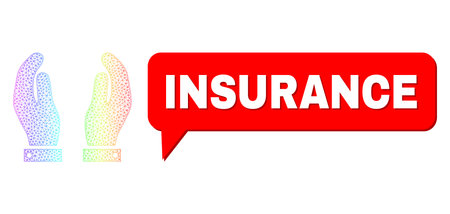Understanding Car Insurance Basics
When it comes to protecting your vehicle on the road, understanding the difference between liability and full coverage insurance is crucial for every American driver. Car insurance isn’t just a legal requirement in most states—it’s also a key part of family financial planning. Liability insurance is the minimum coverage required by law in many places and covers damages or injuries you cause to others in an accident. On the other hand, full coverage is a broader term that typically includes both liability insurance and additional protection like collision and comprehensive coverage, which pay for damages to your own vehicle from accidents, theft, or natural disasters. Knowing how each type of policy works will help you make informed decisions that fit your household’s needs and budget, while ensuring you meet state requirements and safeguard your family’s financial security.
2. Pros and Cons of Liability Insurance
Liability insurance is the minimum required coverage for drivers in most states across the U.S. It covers damages you cause to others in an accident, including medical expenses and property repairs, but it does not pay for your own vehicle or injuries. Here’s an honest look at why some families choose liability insurance, along with the trade-offs you should consider.
Advantages of Liability Insurance
- Cost Savings: Liability insurance is usually much more affordable than full coverage, making it attractive for families on a budget or those with older vehicles.
- Meets Legal Requirements: Carrying liability coverage ensures you comply with state laws, helping you avoid fines and legal trouble.
- Simpler Policy: With fewer components than full coverage, liability insurance policies are easier to understand and manage.
Drawbacks of Liability Insurance
- No Protection for Your Vehicle: If your car is damaged in an accident or by something like hail, you’ll pay out-of-pocket for repairs or replacement.
- Potential Financial Risk: If you’re found at fault in a serious accident and the damages exceed your policy limits, you could be responsible for paying the remaining costs—potentially putting your family’s finances at risk.
- No Coverage for Theft or Non-Collision Damage: Events like theft, vandalism, or hitting a deer are not covered under liability insurance.
Quick Comparison Table
| Liability Insurance | Full Coverage Insurance | |
|---|---|---|
| Covers Other People’s Damages | Yes | Yes |
| Covers Your Own Car Damages | No | Yes |
| Theft/Non-Collision Events | No | Yes |
| Monthly Cost | $ (Lower) | $$$ (Higher) |
| State Requirement | Usually Required | Optional |
| Puts Family Finances at Risk? | If damages exceed limits, yes | No (up to policy limits) |
Choosing liability insurance can make sense if you have an older vehicle or need to keep monthly expenses low. However, it’s important to weigh those savings against the potential risks—especially if your family relies on your vehicle daily or you drive in high-traffic areas. Consider what level of protection gives you peace of mind while fitting into your household budget.

3. Pros and Cons of Full Coverage Insurance
Full coverage insurance is often recommended for newer or higher-value vehicles, but its important to weigh its advantages and disadvantages before making a decision. One of the most significant benefits of full coverage is the peace of mind it provides. Knowing that both your own vehicle and others are covered in case of an accident, theft, or natural disaster can help you feel secure behind the wheel. This is especially valuable for families who rely on their car for daily routines like school drop-offs, commutes, and weekend road trips.
Another key advantage is financial protection. If your vehicle is leased or financed, lenders typically require full coverage to protect their investment. Even if you own your car outright, full coverage ensures that unexpected expenses from collisions, vandalism, or weather-related damage won’t come out of your pocket entirely. This can be a real lifesaver when you’re managing family budgets and trying to avoid large, sudden costs.
However, these benefits come at a price—literally. Full coverage premiums are significantly higher than liability-only policies. For many American families, monthly insurance payments are a major part of household expenses. The cost may not be justified for older cars with low market value since any payout after a claim could be minimal compared to what you’ve paid in premiums over time. Additionally, full coverage policies often include deductibles and sometimes exclusions, so it’s crucial to review the fine print before signing up.
In summary, while full coverage offers comprehensive protection and peace of mind—especially for newer vehicles—it also means higher premiums and potential out-of-pocket costs through deductibles. Carefully consider your vehicle’s value and your family’s financial priorities before choosing this type of policy.
4. Factors to Consider When Choosing Coverage
Deciding between liability and full coverage insurance is an important step for both families and individuals. Each household’s needs are unique, so making the right choice means considering several practical factors that can affect your finances and peace of mind. Here are some key points to think about before selecting your auto insurance plan:
Car Age and Value
The age and value of your car play a major role in determining which coverage makes sense. Full coverage is often recommended for newer vehicles or those with higher market value since repairs or replacements would be expensive out-of-pocket. For older cars with lower value, liability coverage might be sufficient, as the cost of full coverage could exceed the cars worth over time.
| Vehicle Condition | Recommended Coverage |
|---|---|
| Brand New / High Value | Full Coverage |
| 5+ Years Old / Low Value | Liability Only |
Family Budget
Your budget is another crucial factor. Full coverage policies have higher monthly premiums but offer greater protection against a variety of risks. If you’re trying to keep costs down, especially in a multi-car household, balancing the amount of coverage on each vehicle can help stretch your dollars further. Remember to also consider deductibles—the amount you pay out-of-pocket in the event of a claim—since choosing a higher deductible can lower your premium but increase your risk if an accident occurs.
Driving Habits and Lifestyle
If you or your family members drive frequently, commute long distances, or live in areas with high accident rates or severe weather, full coverage provides extra peace of mind. Families with young drivers may benefit from additional protection too, since inexperienced drivers are statistically more likely to be involved in accidents. On the other hand, if you drive infrequently or mainly use public transportation, liability coverage could be adequate for your needs.
Quick Reference: What to Weigh When Choosing Insurance
| Factor | Why It Matters |
|---|---|
| Car Age/Value | Older cars may not need full coverage; new cars should be fully protected. |
| Budget | Bigger families or tight budgets might lean toward liability only. |
| Mileage/Usage | More miles mean higher risk—consider more protection. |
| Driver Experience | Younger/inexperienced drivers usually need more coverage. |
No two families are alike—take time to assess these factors honestly before making a decision. The best auto insurance policy is one that fits your household’s needs while keeping everyone protected on the road.
5. Real-Life Scenarios: Which Coverage Makes Sense?
When it comes to choosing between liability and full coverage insurance, real-life situations can help make the decision clearer for American families. Let’s look at some common scenarios to see how each type of coverage plays out.
Scenario 1: The Daily Commute
Imagine you have an older sedan that you drive to work every day. It’s paid off, and its current value is relatively low. If you’re involved in a minor accident that’s your fault, liability insurance will cover the damage to the other driver’s vehicle and any injuries they sustain—but not your own car. Since repairs might cost more than the car’s value, many families choose liability-only coverage for older vehicles to keep premiums affordable.
Scenario 2: Family Road Trip Mishap
Suppose you take the family SUV on a cross-country road trip and accidentally hit a deer, damaging the front end of your vehicle. Liability insurance won’t help here, but full coverage (which includes comprehensive insurance) would pay for repairs minus your deductible. For households relying on newer vehicles or those with outstanding loans, full coverage offers peace of mind during unexpected incidents.
Scenario 3: Teen Driver Added to Policy
If you’re adding a teenage driver to your policy, there’s a higher risk of fender benders or mistakes. Full coverage can be a wise choice initially—protecting both your finances and your child if their inexperience leads to an accident. On the other hand, if your teen drives an old hand-me-down car, liability might suffice until they gain more experience.
Scenario 4: Living in Areas Prone to Theft or Vandalism
For families living in neighborhoods where car theft or vandalism is more common, comprehensive coverage under a full policy covers losses from these risks. Liability alone wouldn’t offer any reimbursement if your car is stolen or damaged by vandals.
Bottom Line
Your family’s unique situation—including vehicle age, value, driving habits, and local risks—should guide your decision between liability and full coverage. These everyday examples highlight how the right choice can differ from household to household.
6. Making the Right Choice for Your Family
Choosing between liability and full coverage insurance isn’t just about meeting legal requirements—it’s about protecting your family’s financial well-being and peace of mind. Before making a decision, consider these actionable tips to ensure your coverage meets your household’s unique needs.
Assess Your Family’s Driving Habits
Think about how often you drive, who is behind the wheel, and where you travel most. If your family relies heavily on your vehicle for daily commutes, school runs, or road trips, investing in more comprehensive coverage may make sense.
Evaluate Your Vehicle’s Value
Ask yourself: Is your car new, financed, or leased? Full coverage is typically recommended if replacing or repairing your vehicle would be a significant financial burden for your family. For older cars with lower market value, liability insurance might suffice.
Questions to Guide Your Decision
- Can I afford out-of-pocket repairs or replacement costs if my vehicle is damaged or totaled?
- Does my state require more than basic liability insurance?
- How much can I comfortably budget for monthly premiums?
- What are the potential consequences for my family if we’re involved in an accident without full coverage?
Get Multiple Quotes and Review Policy Details
Shop around to compare rates from different insurers. Don’t just look at price—review what each policy covers and any exclusions that could impact your family.
Consult with an Insurance Agent
An experienced agent can help you understand the specifics of each policy type and how they apply to your situation. Bring your questions and concerns so you can make an informed choice together.
No two families are exactly alike, so take time to weigh the pros and cons of liability versus full coverage insurance based on your family’s priorities. The right decision will give you confidence and security as you hit the road together.


